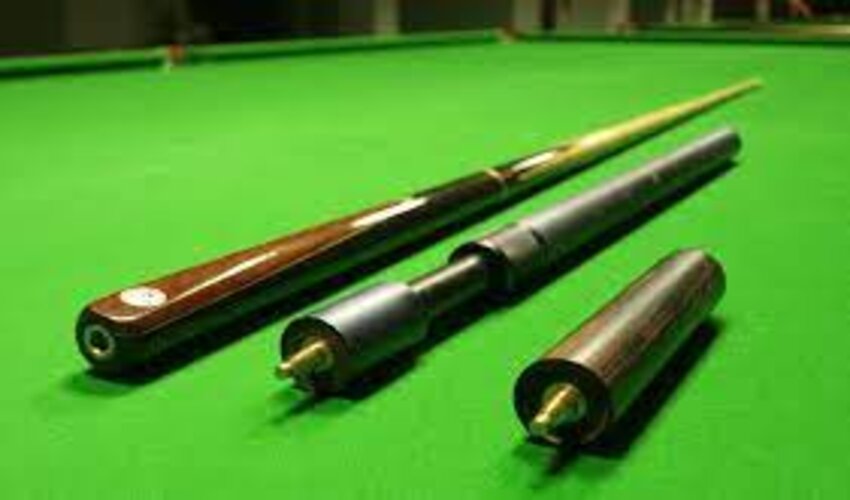
In the arena of cue sports activities, precision and finesse are everything. Your snooker cue, the extension of your skill, is the important thing to mastering this exacting game. To ensure it continually grants pinnacle-notch overall performance and lasts for years yet to come, proper protection is vital. In this article, we’re going to explore guidelines and strategies for keeping your snooker cues, preserving it in impeccable circumstance, and keeping its sturdiness.
The Basics: Cleaning and Polishing
The foundation of snooker cue maintenance is regular cleaning and polishing. Dust, chalk residue, and natural oils from your hands can accumulate on the cue shaft, affecting your game’s consistency. Here’s how to clean and polish your cue effectively:
Materials: You’ll need a soft, lint-free cloth and cue cleaner or mild soapy water.
Procedure:
Dampen the cloth slightly with the cue cleaner or soapy water (ensure it’s not too wet).
Gently wipe the cue shaft from the tip down, removing any accumulated debris.
Use a dry section of the cloth to wipe off excess moisture and buff the shaft to a smooth finish.
By cleaning your cue after every game, you’ll maintain a clean and smooth cue shaft, ensuring optimal performance.
Maintaining the Cue Tip: Shaping and Scuffing
To maintain it in pinnacle shape, you will need to periodically shape and scuff the top. Here’s how to do it:
Materials: Cue tip shaper and cue tip scuffer.
Procedure:
Shaping: Use the cue tip shaper to shape the tip to your desired curvature. This ensures a consistent contact point with the cue ball.
Scuffing: A cue tip scuffer or roughener is used to scuff the surface of the tip. This roughening enhances the tip’s grip on the cue ball, helping you generate spin and control.
Regular tip maintenance is crucial for ensuring your cue delivers the desired spin, control, and accuracy.
Proper Storage and Protection
Protecting your cue from potential damage is essential to its longevity. Here’s how to store your snooker cue properly:
Cue Case: Always store your cue in a cue case when it’s not in use. A dedicated cue case safeguards your cue from dust, accidental impacts, and temperature fluctuations, which can lead to warping.
Vertical Storage: When storing your cue in a cue rack, opt for a vertical position. This minimises the risk of the cue warping over time, as it’s evenly supported.
Avoid Extreme Conditions: Keep your cue away from extreme moisture or heat. Leaving your cue in a damp or hot environment, such as a car on a sunny day, can lead to warping or other forms of damage.
Regular Cue Inspections
Periodically inspecting your cue is crucial for identifying and addressing any issues before they worsen.
Cracks or Splits: Examine the cue for any visible cracks, splits, or damage to the wood. Even small cracks can worsen over time, affecting the cue’s performance.
Ferrule Check: Ensure the ferrule (the white part at the end of the cue) is securely attached and not loose. Loose ferrules can affect the accuracy of your shots.
Professional Cue Servicing
While regular maintenance goes a long way, it’s also advisable to have your cue professionally serviced from time to time. Professional cue technicians can assess your cue’s condition, address any structural or performance issues, and provide maintenance beyond routine care.
In conclusion, maintaining your snooker cue is an integral part of preserving its precision and performance. By following these maintenance tips and incorporating regular inspections, you’ll ensure that your cue consistently delivers the accuracy, control, and finesse necessary for success on the snooker table. With proper care, your snooker cue can be a reliable companion for countless games to come, helping you master the art of snooker.
Maintaining Your Snooker Cue – 7 Fundamentals
- You should always keep your cue in a good quality case to protect it from accidental bumps and knocks. Your cue is a fragile tool and needs to be protected during transport and storage.
- As tempting as it may be, you should never lean your pool cue against a wall at an angle. If you do, the cue can easily tip over and be damaged by hitting the floor.
- Never allow your cue to be exposed to extremely hot or cold temperatures. One of the most common mistakes is to leave the cue in the car, but you shouldn’t do this as temperatures can change quickly! This can cause the cue and its joints to become wet and the shaft to warp, swell, shrink or bend.
- Never use any abrasive pads or sandpaper to clean the cue shaft. This removes the oil treatment and leaves the cue shaft dry and sticky.
- When placing the cue on any surface, be careful to place it gently so as not to damage the joints or, in the worst case scenario, break the tip of the end.
- Always keep an eye on the tip of the cue and when it needs to be replaced, do so immediately. This will keep your performance at its best and avoid having to replace the sleeve due to carelessness.
- Never use water to clean the cue. It may seem okay to use a wet cloth to clean the cue, but you should always use only a slightly damp or dry cloth.

Aimee Garcia is a Marketing Consultant and Technical Writer at DailyTechTime. She has 5+ years of experience in Digital Marketing. She has worked with different IT companies.

